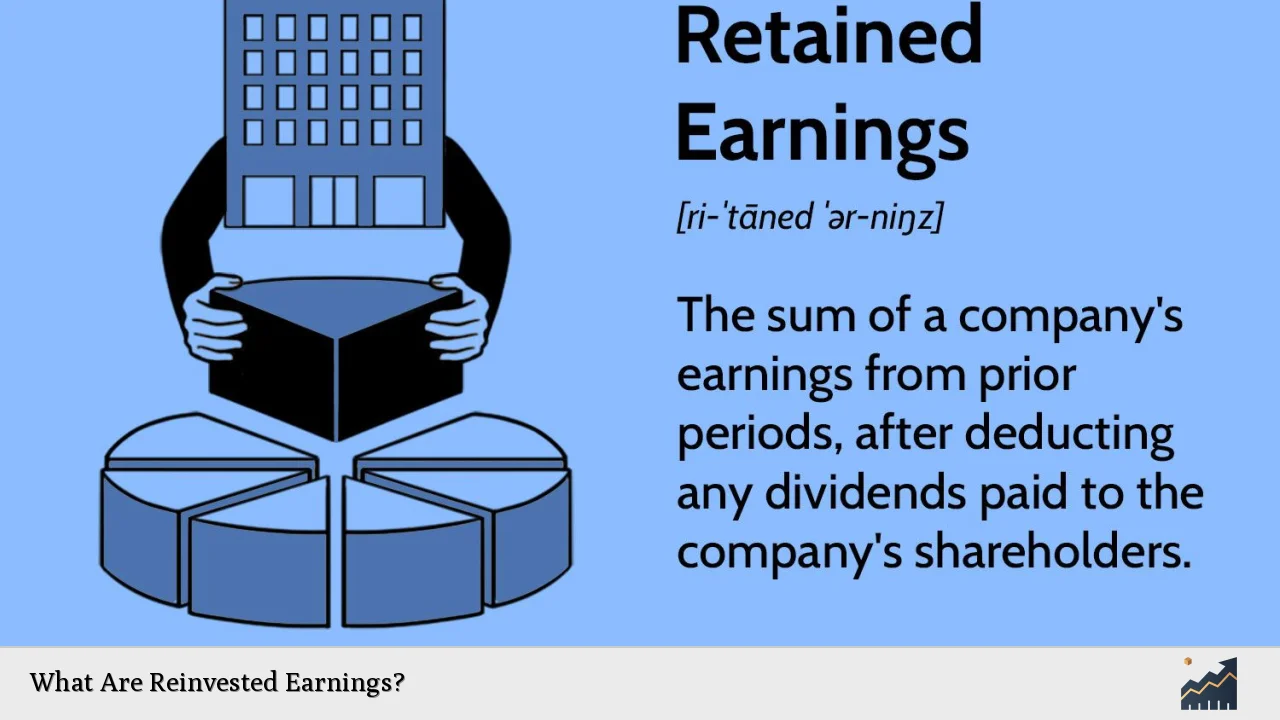Reinvested earnings refer to the portion of a company’s profits that are retained and reinvested in the business rather than distributed to shareholders as dividends. This practice is crucial for companies seeking to fuel growth, enhance operational capabilities, and increase shareholder value over time. By reinvesting earnings, businesses can fund new projects, expand operations, or improve existing assets without relying on external financing.
The concept of reinvested earnings is particularly significant in the context of foreign direct investment (FDI). When multinational corporations operate in foreign markets, they often have the option to repatriate profits or reinvest them in their local operations. The decision to reinvest can be influenced by various factors, including market conditions, tax implications, and strategic business goals.
Reinvested earnings can be either positive or negative. Positive reinvested earnings indicate that a company is retaining profits for growth, while negative figures may suggest that a company is facing losses or is repatriating funds back to its home country.
| Aspect | Description |
|---|---|
| Definition | Portion of profits retained for reinvestment rather than distribution |
| Significance | Essential for growth and operational expansion |
| Context | Commonly associated with foreign direct investment |
| Nature | Can be positive (growth) or negative (losses) |
Importance of Reinvested Earnings
Reinvested earnings play a vital role in a company’s financial strategy. They enable firms to maintain control over their growth trajectory without incurring debt or diluting equity through new stock issuance. Here are some key reasons why reinvested earnings are important:
- Growth Opportunities: Companies can use retained earnings to invest in new projects, research and development, or acquisitions. This helps them stay competitive and innovate within their industry.
- Financial Stability: By retaining earnings instead of distributing them as dividends, companies can build a stronger balance sheet. This financial cushion can be crucial during economic downturns or periods of uncertainty.
- Tax Efficiency: Retained earnings are generally taxed at the corporate level only, whereas dividends are subject to double taxation—once at the corporate level and again at the individual level when distributed to shareholders. This makes reinvestment a more tax-efficient strategy.
- Increased Shareholder Value: Over time, reinvesting profits can lead to higher stock prices as the company grows and becomes more profitable. Shareholders benefit from capital appreciation, even if they do not receive immediate cash dividends.
Companies often balance between paying dividends and retaining earnings based on their growth prospects and market conditions. A firm with significant growth opportunities may choose to retain a larger portion of its earnings compared to a mature company that may offer higher dividends.
Factors Influencing Reinvestment Decisions
Several factors influence whether a company decides to reinvest its earnings or distribute them as dividends:
- Market Conditions: Economic stability and growth prospects in the industry can significantly impact a company’s decision to reinvest. Favorable conditions often encourage firms to allocate funds toward expansion.
- Tax Policies: Tax incentives for reinvestment can motivate companies to retain earnings instead of distributing them. Conversely, high taxes on corporate profits may lead firms to distribute more as dividends.
- Company Stage: Startups and high-growth companies typically reinvest most of their profits to fuel expansion, while established firms may focus more on returning capital to shareholders.
- Management Philosophy: Corporate governance and management attitudes toward growth versus shareholder returns can also shape reinvestment strategies. Some management teams prioritize aggressive growth through reinvestment, while others may favor returning cash to shareholders.
Understanding these factors helps investors assess a company’s potential for future growth based on its reinvestment strategy.
Reinvested Earnings in Foreign Direct Investment
In the context of foreign direct investment (FDI), reinvested earnings represent an essential component of how multinational corporations manage their overseas operations. When foreign subsidiaries generate profits, they face the choice of either repatriating those profits back to the parent company or retaining them for local reinvestment.
Reinvested earnings in FDI are treated as if they were distributed and then immediately reinvested by the parent company into the foreign subsidiary. This accounting treatment reflects the idea that these retained profits contribute directly to the capital base of the subsidiary and support its ongoing operations.
The significance of this practice includes:
- Investment Attraction: Countries often view high levels of reinvested earnings as a positive sign for attracting foreign investment. It indicates confidence from investors in the local market’s potential for growth.
- Economic Impact: Reinvesting profits locally can have substantial economic benefits for host countries, including job creation and infrastructure development.
- Risk Management: By retaining earnings within foreign operations, companies can mitigate risks associated with currency fluctuations and political instability in host countries.
Overall, understanding how reinvested earnings function within FDI is crucial for policymakers aiming to create favorable environments for multinational investments.
Measuring Reinvested Earnings
Measuring reinvested earnings involves analyzing financial statements and understanding how retained profits are utilized within a company. The calculation typically includes:
- Net Income: The total profit generated by a company after all expenses have been deducted from revenues.
- Dividends Paid: The amount distributed to shareholders as cash payments from profits.
The formula for calculating reinvested earnings can be summarized as follows:
$$
\text{Reinvested Earnings} = \text{Net Income} – \text{Dividends Paid}
$$
This calculation provides insight into how much profit is being retained for future investments versus how much is being returned to shareholders.
In practice, companies will report these figures in their financial statements under “retained earnings,” which reflects accumulated profits not distributed as dividends over time.
Advantages and Disadvantages of Reinvesting Earnings
Reinvesting earnings has both advantages and disadvantages that companies must weigh when making financial decisions:
Advantages
- Enhanced Growth Potential: Retaining profits allows companies to invest in opportunities that can lead to significant long-term growth.
- Lower Debt Levels: By using internal funds instead of borrowing, companies maintain lower debt levels, reducing financial risk.
- Flexibility: Companies retain control over how profits are used without needing shareholder approval for each investment decision.
Disadvantages
- Opportunity Cost: Retaining profits means shareholders miss out on immediate cash returns which could be invested elsewhere for potentially higher returns.
- Market Perception: If investors perceive that a company is not returning enough cash through dividends, it could negatively impact stock prices or investor sentiment.
- Risk of Poor Investments: Companies may make poor investment decisions with retained earnings that do not yield expected returns, impacting overall profitability.
Balancing these factors is essential for effective corporate governance and ensuring long-term shareholder value creation.
FAQs About Reinvested Earnings
- What are reinvested earnings?
Reinvested earnings are profits retained by a company instead of being distributed as dividends. - Why do companies choose to reinvest their earnings?
Companies often reinvest their earnings to fund growth opportunities and improve operational capabilities. - How do reinvested earnings affect shareholder value?
Retained earnings can lead to increased shareholder value over time through capital appreciation. - What factors influence a company’s decision on reinvesting earnings?
Factors include market conditions, tax policies, company stage, and management philosophy. - Are there risks associated with reinvesting earnings?
Yes, risks include opportunity costs for shareholders and potential poor investment outcomes.
In conclusion, understanding *reinvested earnings* is crucial for evaluating a company’s financial health and strategic direction. By analyzing how companies manage their profits—whether through retention or distribution—investors can make informed decisions regarding their investments and expectations for future returns.

